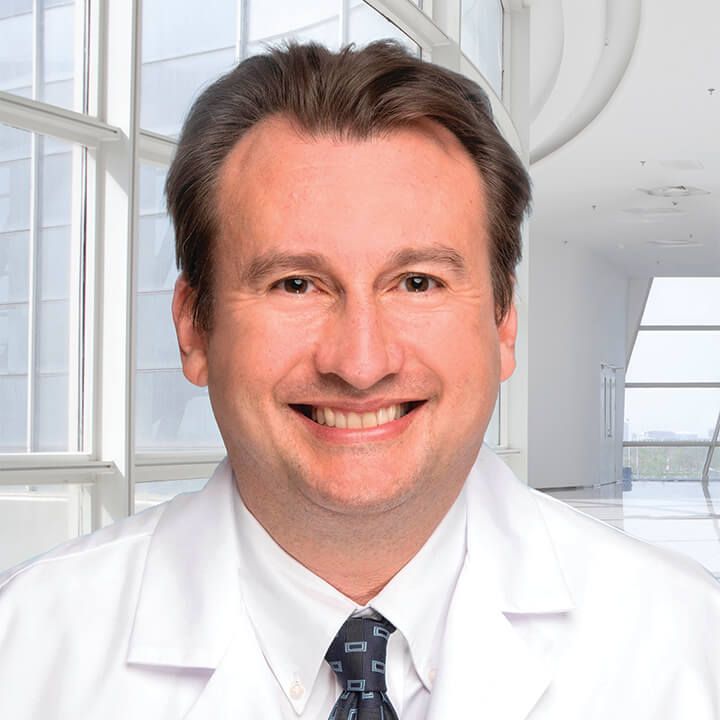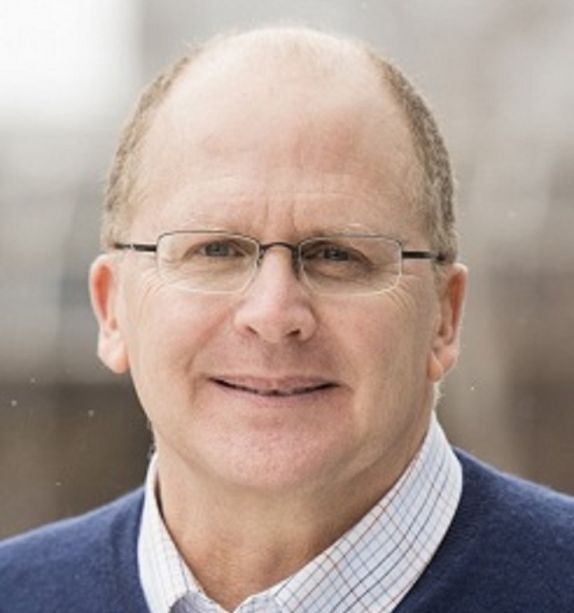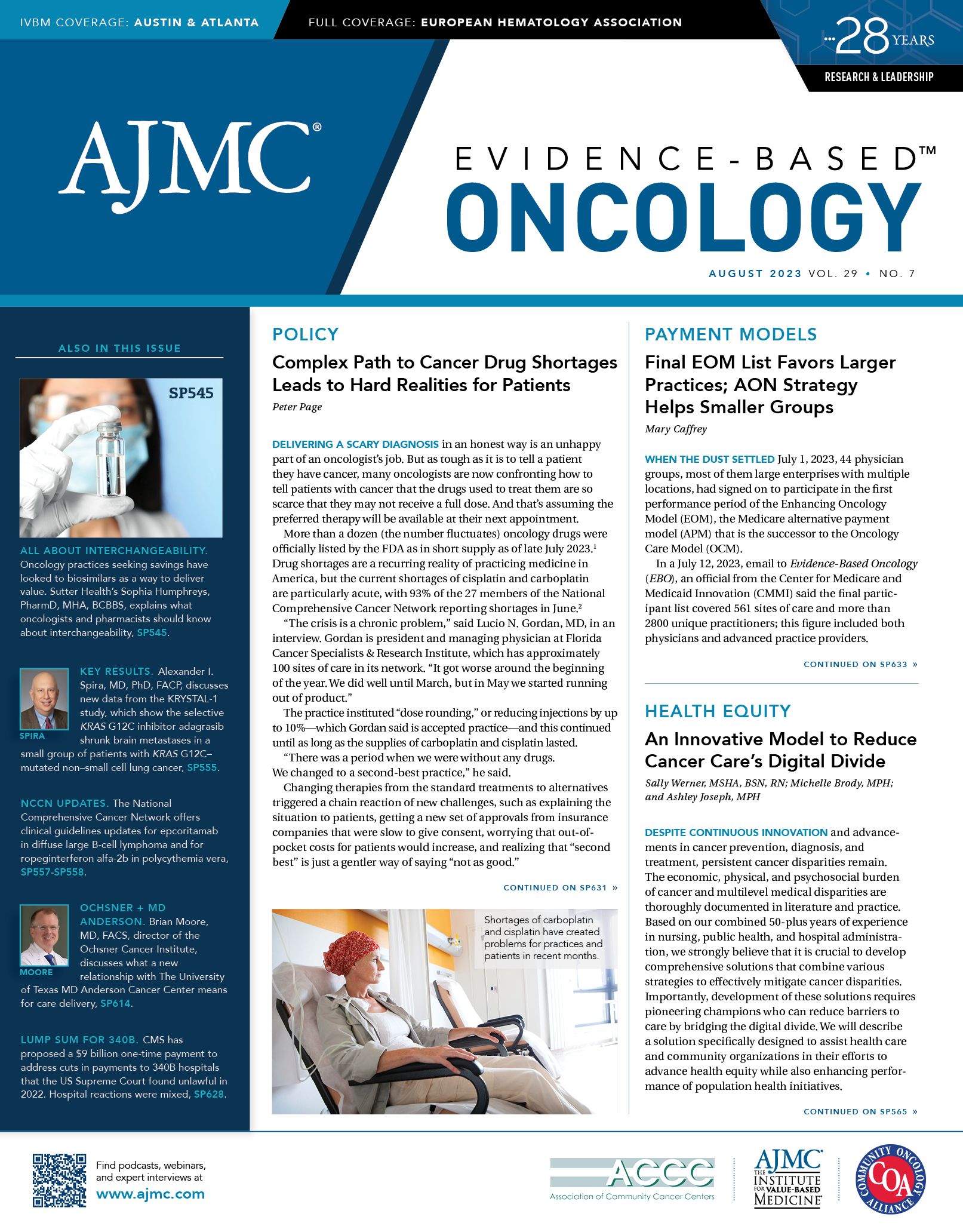- Center on Health Equity & Access
- Clinical
- Health Care Cost
- Health Care Delivery
- Insurance
- Policy
- Technology
- Value-Based Care
Complex Path to Cancer Drug Shortages Leads to Hard Realities for Patients
Delivering a scary diagnosis in an honest way is an unhappy part of an oncologist’s job. But as tough as it is to tell a patient they have cancer, many oncologists are now confronting how to tell patients with cancer that the drugs used to treat them are so scarce that they may not receive a full dose. And that’s assuming the preferred therapy will be available at their next appointment.
More than a dozen (the number fluctuates) oncology drugs were officially listed by the FDA as in short supply as of late July 2023.1 Drug shortages are a recurring reality of practicing medicine in America, but the current shortages of cisplatin and carboplatin are particularly acute, with 93% of the 27 members of the National Comprehensive Cancer Network reporting shortages in June.2
Gordan

“The crisis is a chronic problem,” said Lucio N. Gordan, MD, in an interview. Gordan is president and managing physician at Florida Cancer Specialists & Research Institute, which has approximately 100 sites of care in its network. “It got worse around the beginning of the year. We did well until March, but in May we started running out of product.”
The practice instituted “dose rounding,” or reducing injections by up to 10%—which Gordan said is accepted practice—and this continued until as long as the supplies of carboplatin and cisplatin lasted.
“There was a period when we were without any drugs. We changed to a second-best practice,” he said.
Changing therapies from the standard treatments to alternatives triggered a chain reaction of new challenges, such as explaining the situation to patients, getting a new set of approvals from insurance companies that were slow to give consent, worrying that out-of-pocket costs for patients would increase, and realizing that “second best” is just a gentler way of saying “not as good.”
Gordan has been a physician for 30 years and an oncologist for 21. Cisplatin and carboplatin have been backbone chemotherapy treatments for his entire career.
“The lack of a true plan B has been a problem,’’ he said. “The answer is sometimes not clear because carboplatin and cisplatin have been the workhorses of cancer treatment for decades. Switching to something that is less effective and more toxic is not pleasant.”
William Dahut, MD, chief scientific officer of the American Cancer Society, was blunter when speaking with The New York Times.3 “If these drugs are not available, people are going to get inferior care,” he said. “That’s the bottom line. These aren’t third- or fourth-line drugs where there are multiple other agents around. These are used up front for people you are trying to cure.”
Kristen Rice, MD, a hematologist/oncologist at Medical Oncology Associates of San Diego in California, which is part of the OneOncology network, spends part of each day searching for carboplatin and cisplatin. She must explain to her patients why the drugs are in short supply and how it will affect their treatment, and she has been particularly outspoken about unreliable supplies of the drugs, writing an commentary with the headline,
Rice

“Cancer drug shortages should have patients rioting in the streets.”4
“I haven’t been in the position yet where I’ve had to tell somebody it’s completely unavailable,” she said in a July interview. “That hasn’t happened to my practice yet, which I’m really grateful for because [in] some places it has. And I’ve heard from my colleagues that those conversations [with patients] are incredibly painful. I do worry about the day that I have to have that conversation, and it may still be coming.”
Rice began studying recurring drug shortages during a previous shortage of paclitaxel, which occurred when generic versions of the therapy sold as Abraxane were first released. The reference drug was still available, so the shortage didn’t affect patients, but Rice became curious why there was a shortage in the first place.
“When I tried to dig into it, I just had a hard time finding any articles about it. It was like nobody was upset about it,” she said. “Nobody was really talking about it. If a journalist went to a drug manufacturer to ask them what’s going on, it was like, ‘Oh, supply chain,’ and the response was, ‘Oh, OK, supply chain. Have a nice day.’ There was no follow-up question.”
A Critically Important, Poorly Run Factory in India
People certainly are talking about the current acute shortage of cisplatin and carboplatin now. Because one or the other of the 2 drugs is used to treat approximately 1 in 5 patients diagnosed with cancer, the shortage has resulted in coverage by major national newspapers and network television news.5,6 It was a central topic of congressional hearings7 and prompted the Biden administration to assemble a working group to examine options.8
The current shortage has a clear cause. An inspection in November 2022 by the FDA of the Intas Pharmaceuticals Ltd plant located in an industrial park in western India, itself a relatively rare occurrence,9 revealed a clumsy effort to cover up serious quality-control problems. The FDA inspectors wrote a lengthy report10 that resulted in suspension of manufacturing at the Intas plant and a contrite vow by Intas to clean up its act.
“Intas is fully dedicated to continuing its heritage of supplying quality medicines,” the company said in a statement.11
The problem is, that single manufacturing facility is the source of approximately half of the cisplatin used in the United States, as well as a significant source of carboplatin.5 Which raises the question, why is the supply of 2 exceedingly inexpensive drugs of existential importance in cancer care so precarious?
“This is people potentially dying because they can’t get a drug that costs $6 a dose,” Rice said in frustration. “And it’s just because it’s not profitable for people to make anymore.”
“That’s the US health care system, because nothing makes sense,” said A. Mark Fendrick, MD, a professor of internal medicine and health
Fendrick

management and policy at the School of Public Health and director of the Center for Value-Based Insurance Design at the University of Michigan in Ann Arbor. Fendrick is also the co–editor in chief of The American Journal of Managed Care.
The business logic of the generic drug market drives investment toward specialty drugs for treatment of chronic conditions, Fendrick said in an interview, citing generic statins as an example. The CDC estimates that one-third of American adults, approximately 78.1 million people, are eligible to take a cholesterol-lowering medication and that slightly more than half of those eligible are taking one.12 The drugs are relatively easy to make, ship, and store, and patients take the drugs for years.13
“Statin drugs still have a fairly robust, generic market because the number of people who take them is large and the duration per person who takes them is long,” Fendrick said, noting that the dynamics are the complete opposite for sterile injectable cancer drugs, which are complex to manufacture and are taken by each patient only a few times. Fendrick called the situation “the perfect storm.”
“It’s a generic drug with a low margin that people take for a short period of time,” he said. “It is very complicated from the pharmacologic standpoint to manufacture. And then there’s the issue of shelf life and storage.”
Consequently, the manufacture of sterile injectible cancer drugs and the active pharmaceutical ingredients they are made from have moved mostly to India and China. A report by the majority staff of the US Senate Committee on Homeland Security and Governmental Affairs found that “90% to 95% of generic sterile injectable drugs for critical acute care in the US rely on key starting materials and drug substances from China and India.”14
Distorted Prices
The “invisible hand of the market” in governing supply and demand and, consequently, prices that Adam Smith famously wrote about is a useless metaphor for understanding drug prices. There are many not-so-invisible hands working to drive down the cost of generic injectable cancer medications. The cost of any particular drug is influenced by Medicare reimbursements, mandatory 340B Drug Pricing Program discounts, and the Medicaid Drug Rebate Program rebates. The recently enacted Inflation Reduction Act will soon allow Medicare to negotiate the price of a short list of very expensive drugs. Added into that mix are invisible discounts and rebates negotiated between pharmacy benefit managers and drug manufacturers.
“Our country has a bizarre, convoluted health system where the ‘price’ of drugs and the ‘cost’ to patients are 2 very different and disjointed things,” Ted Okon, MBA, executive director of the Community Oncology Alliance (COA), said in testimony in early May 2023 to the US House of Representatives Health Subcommittee on Ways and Means.15 COA represents oncology practices not affiliated with a hospital.
Okon, who reminded the committee that he had given much the same testimony in 2011, laid the blame for the current cancer drug shortage—and the perennial precarity of supply—on “misguided and even destructive public policy” but was withering in his comments on pharmacy benefit managers (PBMs), which have massive buying power to negotiate rock-bottom prices.
“The top PBMs are an oligopoly with a stranglehold on the nation’s prescription drug market. They fuel drug costs for Americans and are pushing independent pharmacists out of business, creating pharmacy ‘deserts’ in rural areas,” Okon testified. “These PBMs have also merged with the top health insurers to throw ‘prior authorization’ roadblocks, ‘fail first’ step therapy, and other so-called ‘utilization management’ tactics at oncologists to dictate how to treat their patients.” Then, he said, the PBMs mandate how, when, and where cancer patients will get their potentially lifesaving drugs, often via PBM-owned mail-order pharmacies.15
As he has done for years, Okon cited the federal 340B program as an example of well-intended public policy gone wrong. The program was created in 1992 with the intention of driving down the price of medications purchased by hospitals that provide treatment for patients who are low income. Few hospitals participated until eligibility was expanded for general acute care hospitals in 2003 and for other categories of hospitals in 2010.
After 2003, the program grew rapidly, with 42% of general acute care hospitals participating by 2012, according to a 2018 analysis in the New England Journal of Medicine (NEJM).16
The savings from the mandatory discounts are supposed to be reinvested to expand care for those same patient populations, but the NEJM analysis found “no evidence of hospitals using the surplus monetary resources generated from administering discounted drugs to invest in safety-net providers, provide more inpatient care to low-income patients, or enhance care for low-income groups in ways that would reduce mortality.”16
The reviewers concluded that “the discounts—which range from 20% to 50%—only strengthen the incentives for hospitals to supply drugs to patients who have generous insurance coverage. The extent to which hospitals support the mission of the program is subject to minimal oversight.”16
Nicolas Ferreyros, managing director of policy, advocacy, and communications at COA, said in an interview that the 340B program and the growing purchasing power of PBMs have created a “vicious cycle” that has encouraged hospitals to purchase independent medical practices and, particularly, oncology practices.
“The 340B program provides these large hospitals with discounted drugs that they sell at full price to patients,” Ferreyros said. “These discounts are percentage based, so it’s even more lucrative when these are high-price drugs. 340B hospitals are incentivized to not only dispense more and more drugs, but also to take over service lines in their markets. And so, over the last 2 decades, you’ve seen a lot of community oncology practices be taken over or forced out of business by 340B hospitals so they can acquire greater market share.”
The Solution That Cannot Be Spoken
The current shortage of carboplatin and cisplatin probably will not be resolved until the Intas plant resumes production, but more durable solutions to build a more resilient supply of sterile injectable generic drugs are, at best, in the discussion stage. A barrier to resolving the crisis is the public’s frustration with out-of-pocket costs for prescription drugs.
COA submitted a lengthy response to a congressional request for information asking how to resolve the problem of drug shortages. The document repeatedly speaks of how to correct the “financial disincentives” and “pricing dynamics” that keep generic drugmakers from properly maintaining and regularly upgrading their plants.17
A study of drug shortages recently released by The Hamilton Project concludes that “market dynamics’’ are the root cause of shortages of generic sterile injectable drugs and recommends “push incentives to improve manufacturing infrastructure with the implementation of pull incentives through a pay for-performance program that rewards hospitals for taking steps to prevent shortages before they occur.”18
Similar phrasing is used in every examination of drug shortages, and most contain some sort of caveat like the one in the COA request-for-information response: “COA is by no means in any way trying to express support for high drug prices.’’17
An overview article on public opinion published in 2019 in JAMA found that 79% of adults in the US say the cost of prescription drugs is unreasonable and 78% blame drug company profits for high health care spending.19
“Congress knows there’s a problem, but there is such a partisan divide in Washington right now on all issues, and it has creeped into this one,” Ferreyros said. “They need to fix the underlying issues, but they can’t agree to what…because, fundamentally, nobody likes the solution. Nobody likes to solve a problem by paying pharma more. They have vilified pharma so much that they’ve painted themselves into a corner.”
But if talking about how to solve the problem is tough for politicians, try telling a patient with cancer that the drug keeping them alive is not available.
“It is very difficult to explain,” Gordan said.
References
1. FDA drug shortages. FDA. Accessed July 24, 2023. https://bit.ly/3DrZRys
2. National Comprehensive Cancer Network. NCCN Best Practices Committee carboplatin and cisplatin shortage survey results. June 7, 2023. Accessed July 24, 2023. https://bit.ly/4566QsB
3. Jewett C. Drug shortages near an all-time high, leading to rationing. New York Times. Updated May 18, 2023. Accessed July 24, 2023. https://bit.ly/3Orpy8J
4. Rice K. Cancer drug shortages should have patients rioting in the streets. Stat. June 19, 2023. Accessed July 24, 2023. https://www.statnews.com/2023/06/19/cisplatin-carboplatin-generic-cancer-drug-shortage/
5. Gilbert D. How troubles at a US factory in India led to a US cancer drug shortage. Washington Post. June 27, 2023. Accessed July 24, 2023. https://bit.ly/3DuD70V
6. Kopf M, Beck C. As cancer drug shortages grow, some doctors are forced to ration doses or delay care. NBC News. May 26, 2023. Accessed July 24, 2023. https://bit.ly/3pU6mXT
7. Weixel N, Choi J. Oncologists urge Congress to act on cancer drug shortages. The Hill. June 14, 2023. Accessed July 24, 2023. https://bit.ly/3rIEwOP
8. Hollowell A. White House quietly assembles team to tackle drug shortages: report. Becker’s Hospital Review. May 11, 2023. Accessed July 24, 2023. https://bit.ly/44Fav0K
9. Peters G. A price too high: cost, supply, and security threats to affordable prescription drugs. US Senate Committee on Homeland Security and Government Affairs. Accessed July 24, 2023. https://bit.ly/43E5gNy
10. Compliance record: Intas Pharmaceuticals. US Department of Health and Human Services. Accessed July 24, 2023. https://bit.ly/4704ddP
11. Thaker N. Intas Pharma’s Ahmedabad facility gets import alert from US FDA. Forbes. June 5, 2023. Updated June 5, 2023. Accessed July 24, 2023. https://bit.ly/3rFrWjp
12. Half of those who need them not taking cholesterol-lowering medications. News release. CDC. December 3, 2015. Accessed July 24, 2023. https://bit.ly/3KbCGfQ
13. Overview: statins. National Health Service. Updated October 3, 2022. Accessed July 24, 2023. https://bit.ly/3OqS2PP
14. Senate Homeland Security and Government Affairs Majority. Short supply: the health and national security risks of drug shortages. March 2023. Accessed July 24, 2023. https://bit.ly/3rGrukM
15. Okon T. Written testimony on hearing: examining policies that inhibit innovation and patient access. US House of Representatives Health Subcommittee on Ways and Means. May 8, 2023. Accessed July 24, 2023. https://bit.ly/3YcVEIz
16. Desai S, McWilliams JM. Consequences of the 340B Drug Pricing Program. N Engl J Med. 2018;378(6):539-548. doi:10.1056/NEJMsa1706475
17. COA response to Congressional RFI on drug shortages. Community Oncology Alliance. July 7, 2023. Accessed July 24, 2023. https://bit.ly/43J0AGa
18. Wosinska ME, Frank RG. Federal policies to address persistent generic drug shortages. The Hamilton Project. June 2023. Accessed July 25, 2023. https://www.hamiltonproject.org/wp-content/uploads/2023/06/20230621_ES_THP_GSI_Report_Final.pdf
19. Kirzinger A, Muñana C, Fehr R, Rousseau D; Kaiser Family Foundation. US public’s perspective on prescription drug costs. JAMA. 2019;322(15):1440. doi:10.1001/jama.2019.15547

